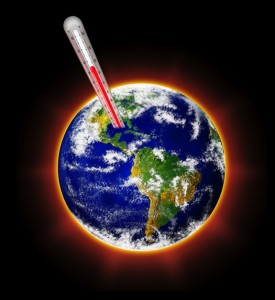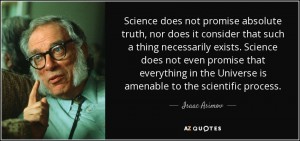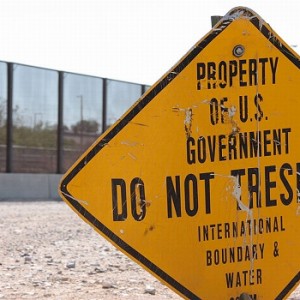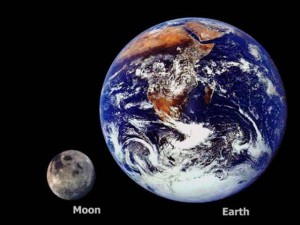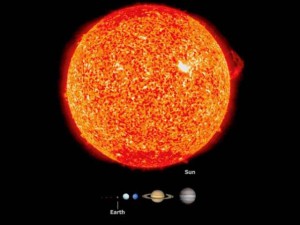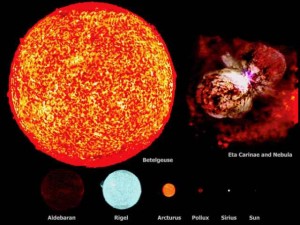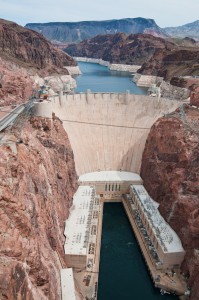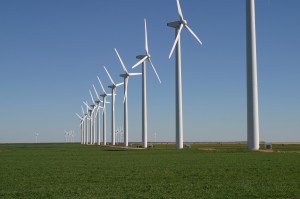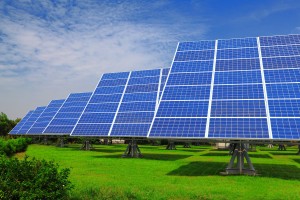
Let me first state for the record: I am pro-gun. I mean that in the sense that I believe that the Second Amendment gives us the right to own the gun of our choice. I can own a pistol, a rifle, or a shotgun. I can own as many as I choose. I can hunt or not hunt. I can target shoot or not. I can use the weapons or keep them for home defense. I can do anything or nothing at all with them, as long as I do not commit a crime.
I am also of the notion that the Framers of the Constitution knew exactly what they were doing when they wrote the Amendment. The country had just been created by a revolutionary war. The Colonists were (at the time) British citizens, and they took up arms against their own government. I believe in writing the Second Amendment, the Framers deliberately made the wording fuzzy; first a nod to the militia, a product of the state, but then noting “the right of the people to keep and bear Arms, shall not be infringed”. While they certainly hoped there would never be another revolution, I believe they kept that door a bit open by making sure the citizens could do it again if necessary. Obviously, this is just my opinion, but these were very intelligent men, and the Second Amendment seems to be parsed in this strange way on purpose.
There is an ongoing debate today about guns; ownership, use, and misuse. Hardly a day goes by without seeing a news article or Internet piece about guns; usually in the negative. Groups on both sides clamor for more control of gun ownership or less control. Contrary “facts” are hurled back and forth, to the point of the absurd. There aren’t enough laws; there are too many laws. Murders with guns are up, murders are down, and on and on.
I decided to look into this for myself. I thought that by looking at some of the actual source numbers I might be able to determine who is speaking truth and who is speaking propaganda. After some time attempting to research the issue I realized that in order to make any sense it was important to focus on specifics. I decided to narrow my look to deaths by firearms in the United States. I made some interesting discoveries. The reason I focused on death is because it is an absolute. Discussing injuries becomes less specific and less precise. Most reports indicate about 85 thousand people were “injured” by firearms in 2013, but fail to define type of injury. Of these numbers, approximately 33 thousand were treated and released, presuming a minor injury. I suspect that many of these could be people injured, for example, by running away from a shooting incident and perhaps falling down. It would be helpful if this reported number were more specific, but it is not.
On the other hand, it should be noted that the CDC recorded over 30 million non-fatal injuries in 2013. Once again, firearms accounted for about 85,000 of these injuries. To keep perspective however, it needs to be noted that the same report shows that 113,000 were injured by dogs, 405,000 people were injured in fires, 1.3 million were poisoned, and over 8 million injured in falls. So firearm injuries accounted for .003 percent (85000/30000000) of reported injuries in 2013.
The Centers for Disease Control (CDC) has been the offical recorder of death and injury by firearms for a few years now. Their online database, WISQARS (Web-Based injury Statistics Query and Reporting System), offers abundant data about all sorts of things, including deaths by firearm. (CDC WISQARS) The data base allows for sorting by categories and subcatagories, which allows specific data to be broken out. The most recent data available is for the year 2013. All the numbers that follow come from that report.
Total Deaths by Firearm 2013: 33636

Unintentional Deaths by Firearm (Accident) 2013: 505
Accidents with firearms are largely preventable. There is no doubt that there are people who are not careful with their guns, just as there are people who are not careful driving. In both cases, they and/or others can be seriously injured or killed. To the best of my knowledge, there is no way to account for human carelessness, laziness, or plain stupidity. There is no way to detect it in an individual, which is why these people sometimes own guns and drive cars. There are hundreds of millions of guns in this country, and tens of millions gun owners. Positive education about gun safety, like the NRA offers, seems to be the best way to attempt to reduce these accidents.
Of the above number, 108 accidental deaths were children under the age of 18. Less I be accused of being heartless, this is horrible. No child should be killed this way. On the other hand, during the same year, 807 children died by drowning, 320 died in fires, and 106 were killed while riding their bikes.
The often-criticized National Rifle Association (NRA) probably does more than any other group to promote gun safety. They offer thousands of free and low-cost training programs to guide people how to use a gun safely. It seems to me those who make the most noise about children being shot in accidents should be promoting the one group who actually does something about it, rather than proposing another round of “laws” which essentially do nothing. (NRA Training Courses).
Suicides by Firearm 2013: 21175.
Frankly, this number surprised me. I never thought much about the numbers of people who commit suicide, much less those who use a gun to do so. From what I can gather, there are about 40+ thousand suicides in the U.S. each year, with firearms accounting for about half of that number. The majority of suicides of all types, including firearms, are committed by males. Males account for 86% of suicides, and the female suicide rate is 14%.
Some might make the argument that if a gun was not present, a person might not commit suicide, and I suppose that could be the case in some instances. But this is a specious argument. No one can truly understand the motivations of a particular suicide; we can only speculate. Similarly, supposing the presence of a gun had any impact on the action whatsoever is without merit. If a person is despondent enough to take their own life, discussing the method they used is apropos of nothing.
According to data from the CDC, the overall suicide rate at around forty thousand suicides per year has not changed significantly since 1981. Firearms have consistantly accounted for around fifty percent of those deaths.
As we can see already, the majority of deaths by firearms (65%) are suicide or accident related. Clearly these are an issue, but the anti-gun groups like to concentrate on homicide, giving the impression that murder by firearm is rampant. Certainly a word like “rampant” is fluid; what it means to you may be different than what it means to me, but let’s stick with the numbers for a bit:
Homicides by Firearm 2013: 11208
Still a large number, to be sure, but how does that break down? Who is killing whom ? Suppose we break down this number by the race of the victim? As this point, in addition to raw numbers, we’ll include the rate per 100,000 of the population as this can be instructive:
Homicide victims by race: All Race Total 3.61/100M
White: 2799 1.42/100M
Hispanic: 1750 2.98/100M
Black: 6364 14.84/100M
Let’s now look at children being killed, insamuch as this is a major point with the anti-gun groups:
Homicide deaths under the age of 18: All Race Total 1.27/100M
White: 159 0.37/100M
Hispanic: 207 1.25/100M
Black: 598 4.62/100M
** Note: the numbers do not add up exactly to the overall figures, as it excludes homicides of other races.
It quickly becomes evident that blacks are killing blacks at about seven (7) times the rate of whites killing whites. The difference in deaths of children is over twelve (12) times higher. Overwhelmingly the victims are murdered by someone of their own race. There is some crossover, to be sure, but for the most part each race kills their own more often than not. Looking at the FBI homicide statistics based on race, for the year 2013, when race of the perpetrator was known, Whites were killed by other Whites 83.5 percent of the time, and Blacks were killed by Blacks 90 percrent of the time.
Whites are 77.7% of the population, and accounted for 25% of all homicides. Blacks are 13.2% of the population and accounted for 57% of all homicides. Hispanics are 17.1% of the population and accounted for 16% of all homicides.
I would be castigated if I were to speculate on the difference in the White and Black homicide rate. I am not a social scientist, nor do I have any particular knowledge about the factors that go into assessing this. The numbers, however, are the numbers, and those are the facts. Causation is for others to determine.
The who, and now the where: Five cities account for about twenty-five percent of homicides: Chicago, 415; New York City, 333; Detroit, 332; Los Angeles, 255; and Philadelphia, 246. Many smaller cities, however, have a much higher death per hundred thousand rate than the larger cities. East St. Louis, Camden NJ, Gary Indiana, Chester PA, and Flint Michigan all fall within the top thirty cities in rate of homicide.
While homicides by firearms occur throughout the U.S, it is clear that there is a concentration in urban areas.
Gangs: 2000 Homicides a Year

Gang related homicides: The Department of Justice reports that there are an average of 2000 gang-related homicides a year (Gang Related Homicides). Most of these appear to be gun-related, but there does not appear to be accurate statistics on this.
Gang members: Hispanic 46%, Black 35%, White 12%. There are an estimated 850,000 gang members in the U.S. in about 31,000 gangs.
According to the FBI, gangs account for about 48 percent of all violent crime, and as much as 90% in some urban areas. Several gangs such as The Bloods, Crips, Latin Kings, and the infamous Mara Salvatrucha, better known as MS-13, have national reach. MS-13, for example, has operations in 42 states.
FBI Gang Report
Mass shootings
The definition of a mass murder by the FBI is three or more people killed in a single incident. When there is a mass shooting it captures the headlines, sometimes for days or even weeks. What is almost never written is that for as awful and tragic these killings are, they are still quite rare, and a very small percentage of people killed each year. Between 2007 and 2013, the average number of mass shootings in the U.S. was six per year, with a total average of forty people killed. In 2013 there were five shootings and thirty-six fatalities, and in 2014 there were two shootings and nine fatalities.
Mass murderers are obviously mentally ill. It would be nice to suggest that these people could be prevented from acquiring firearms, but it simply is not possible. A few examples:
Adam Lanza Newtown Ct (2012): Lanza shot and killed 28 teachers and children at a grade school. Lanza had Asperger Syndrome and obsessive-compulsive disorder diagnosed. Whether or not Lanza’s psychological disorders would have prevented him for obtaining guns is largely moot, inasmuch as the guns he used in the massacre belonged to his mother, who he also killed.
James Holmes, Aurora Colorado (2012): Holmes shot and killed 12 people and injured 70 others in a mass shooting in a movie theater. He apparently suffered from depression and obsessions from the time he was in middle school, and reportedly attempted suicide at the age of eleven. He did not see any mental health professionals for his conditions. He was very intelligent and graduated from college with honors and was a Phi Beta Kappa. He was enrolled in a PhD. program in neuroscience. He purchased the weapons and ammunition he used in the killings legally and completed the background check successfully. He had no criminal record.
Nidal Malik Hasan, Fort Hood Texas (2009): Hasan was a psychiatrist, and major in the United States Army. He killed 13 people and injured 30 others in a mass shooting at Fort Hood. Hasan is a Muslim, and many believe this shooting was an act of terrorism. It was not so classified, however, and is catagorized as workplace violence. Hasan had been in the Army since 1988, had a good military record and no criminal record.
Aaron Alexis, Washington Navy Yard (2013): While employed with a civilian contractor, Alexis entered the Washington Navy Yard and killed 13 people, including himself. A Navy veteran, he had been arrested a few times on minor charges, but never prosecuted, so he legally purchased a 12 guage shotgun he used in the murders. While some who knew him and the media suggested he was suffering from a mental illness, he had not been treated for any such illness.
As in many cases of mass murder, there are no laws that would have prevented these murderers from obtaining the weapons. In many cases, the shooter had not received mental health attention, and did not have a criminal record, two of the “roadblocks” that might prevent a person from buying a gun.
The notion that a person being treated for a mental illness would have to be “reported” somewhere is quite controversial. Requiring doctors to make such reports steps into the realm of doctor/patient confidentiality, and poses many legal questions. It is one thing for a doctor to report his patient has high blood pressure, it is something quite different to require a doctor to report his patient has a mental illness.
Mass Shootings. 1982-2015 Mother Jones Magazine
New York Magazine, Data on Mass Shootings
Domestic violence : 1569? **
It is very difficult to get reliable data on domestic violent deaths by firearm. According to the FBI, however, about 14 percent of murders are committed by a family member. Another 30 percent are committed by a person known to the victim (friend, neighbor, co-worker etc).
There are numerous “studies” which suggest that a firearm in the home contributes to the escalation of a domestic dispute, often leading to a shooting and/or homicide. This may be true, or it may be not true, no one knows for sure. Simply put, a domestic dispute is usually within the confines of the home, and details are only known to those involved until a crime is committed. Some statistical studies suggest a firearm in the home increases potential for violence, but like all such studies, it is speculation based on actual crimes. There is frankly no way to prove or disprove this theory, leaving it open for continual debate.
** This number was determined by using the murders by gun number: (11208 x14%)
FBI Statistics — Murder by relationship
Guns and Gun Laws
No one knows exactly how many guns are in private hands in the United States. Many estimates seem to hover around the figure 270,000,000, and this estimate is considered low by many. Presuming this number is roughly correct, and 11208 homicides were committed with a gun in 2013, this means .00004 or .004 percent of the guns in the country were used for murders. Conversely it means that 99.996 percent of guns were not used to murder anyone.
How many gun laws are there? A common figure often seen is 20,000, but that number is deceptive. While there may be thousands of gun regulations at the Federal, state, county, city, and local levels, Federal and state laws often trump local ordinances, rendering them moot. According to a study by the Brookings Institute,(Brookings Institute Study), there are about 300 major gun laws on the books. These laws can vary from moderate (Texas), to very restrictive (New Jersey). That being said, some cities such as Chicago and Washington DC which have very restrictive laws also have very high gun homicide rates.
There is currently no National gun registration law. Gun registration varies from state to state, with many states making registration voluntary. Many states require a permit to purchase a handgun, but do not require firearms already in a person’s possession to be registered.
One state with a strict registration law is New York. The state enacted a tough mandatory registration law in 2013. To date, around 50,000 firearms have been registered. The problem with this is that there are probably around 18 million guns in New York state. Obviously, many, many people are ignoring the registration law.
The shear volume of existing firearms makes the very notion of gun registration rediculous. It may make people feel better, but it will have no effect on homicides. Closing “loopholes” at places like gun shows, and requiring waiting periods on the purchase of new firearms does not even touch the vast numbers of guns in the population.
Registration of firearms effects only honest citizens. Criminals will not register guns. The “toughening” of laws is nothing more than a placebo it makes people feel like something is being done — until the next incident.
So are there too many guns, or too much violence? Obviously, only a small percentage of all guns are used in homicides, so one must think there is too much violence. Curiously, violent crime in the United States in down and has been decreasing, even as the population grows. Gun ownership, as well, has been continually declining since around 1980.
Watching the media, one would think crime is exponentially higher today. Actually, all violent crime, including murder, peaked in 1991 and has been going down consistantly ever since. Click the link for the numbers: Crime Rates in the United States
That being said, I find our propensity for violence today, particularly with younger people, to be disturbing. It seems that the great majority of movies geared for young people, especially “action/adventure” movies are often wall to wall violence. The abundance of violent video games in the “Grand Theft Auto” mode is equally bothersome. It strikes me that too many young people spend far too much time watching or being active players in things that appear to be violence just for the sake of violence. It seems to me that a kid who has thousands of hours experience with a game controller “killing” enemies would have done much better with his time riding his bike or playing baseball.
We live in a violent world, and this has always been the case since the dawn of time. Our access today to 24 hour a day news reporting and the Internet may make it seem more violent, even if it is not. To be sure, there are violent people and places where violence seems to happen more frequently. But overall, especially considering the huge numbers of firearms in this county, the United States is a pretty safe place.
References:
1. CDC Database: (CDC WISQARS)
2. NRA Training: (NRA Training Courses)
3. Gang Related Homicides:(Gang Related Homicides).
4. Gun Laws Reference: (Brookings Institute Study)
5. Mass Shooting Data: Mass Shootings. 1982-2015 Mother Jones Magazine
6. Mass Shooting Data: New York Magazine, Data on Mass Shootings
7. Domestic violence: FBI Statistics — Murder by relationship
8. Crime rates: Crime Rates in the United States

